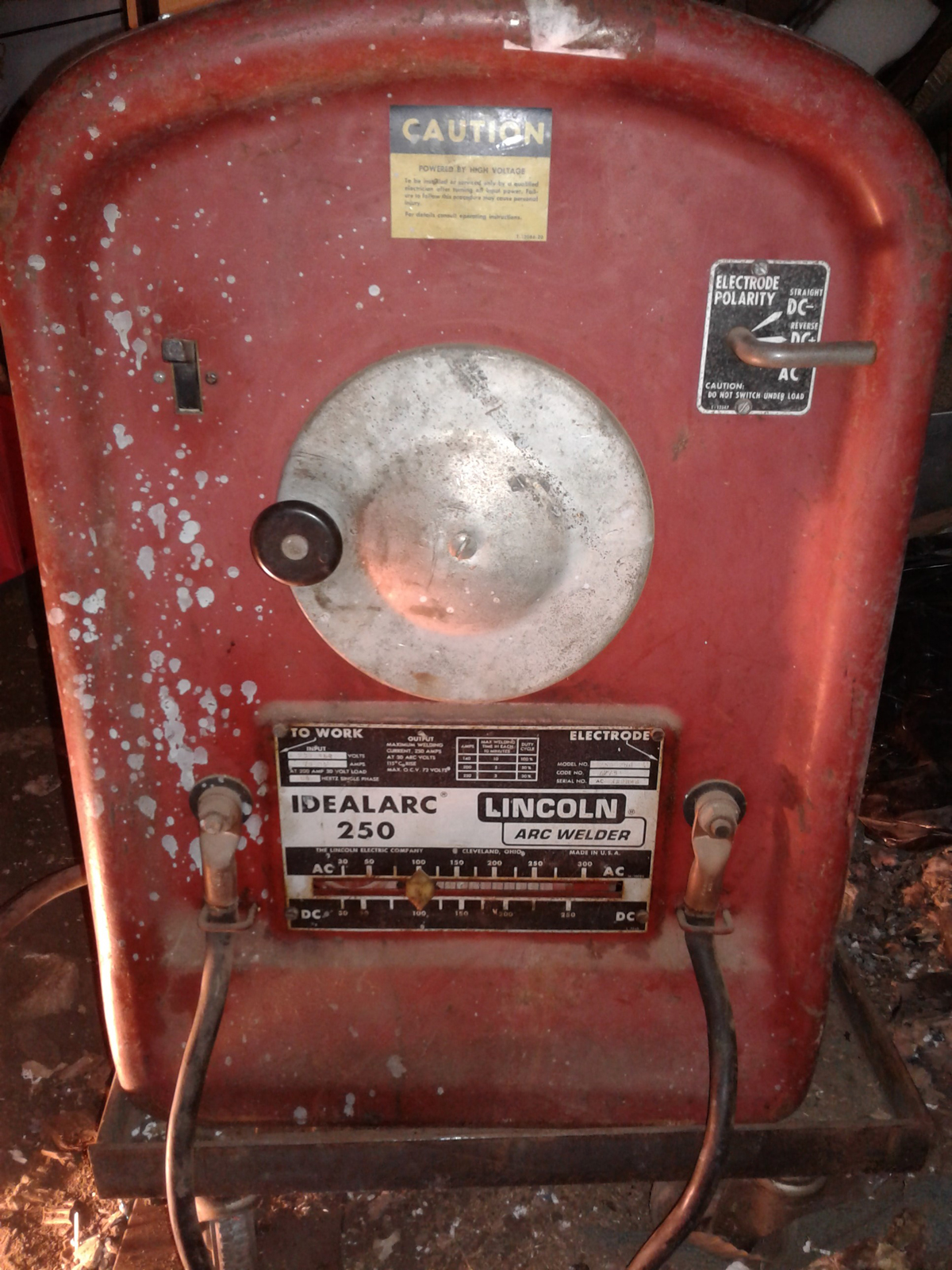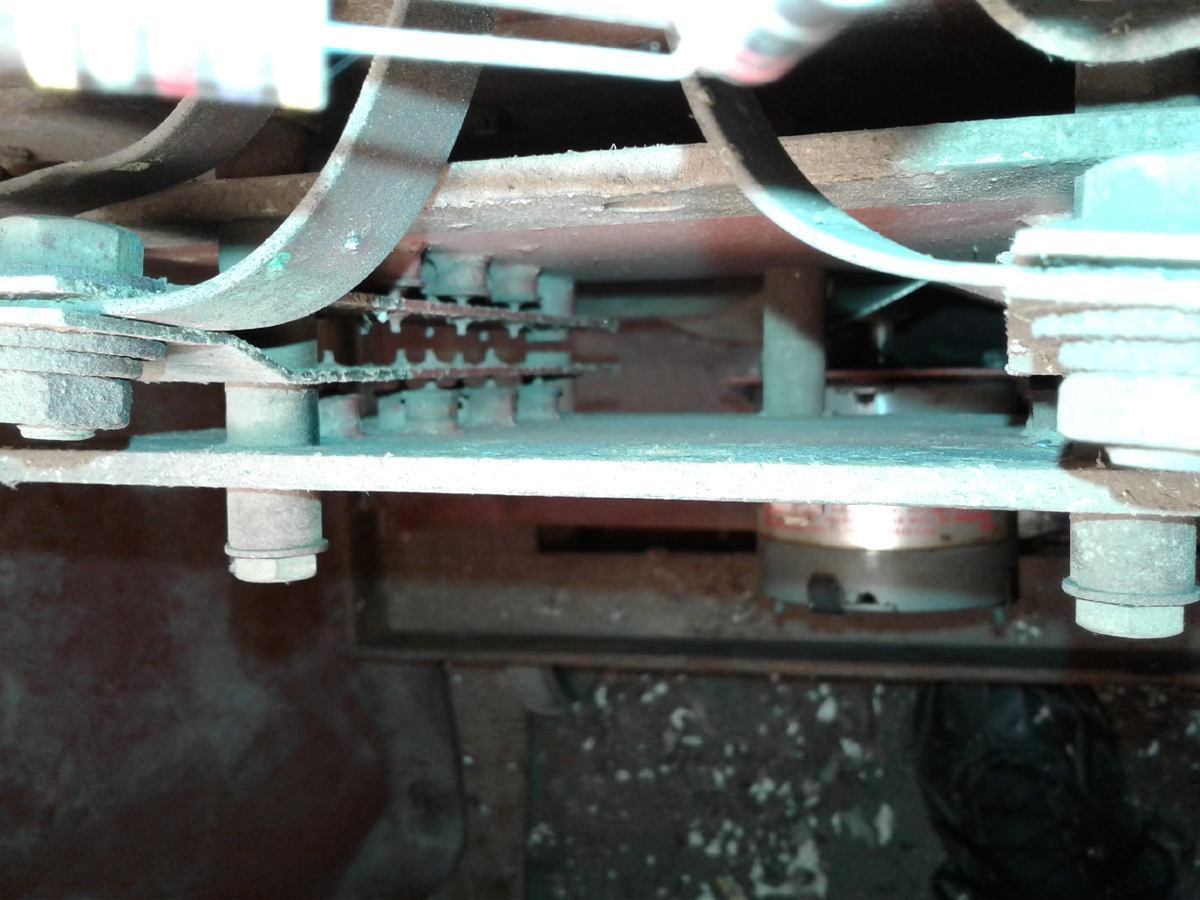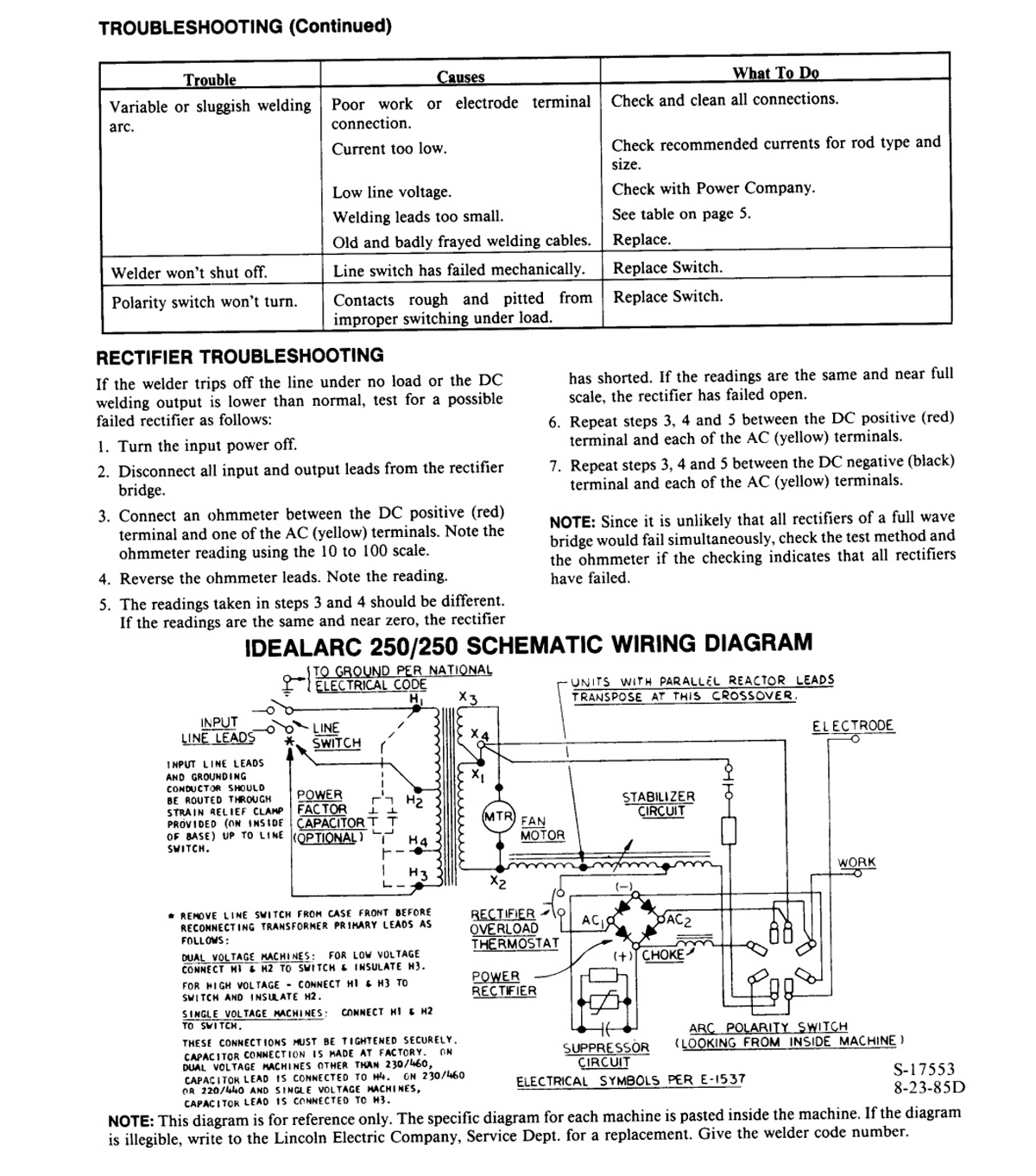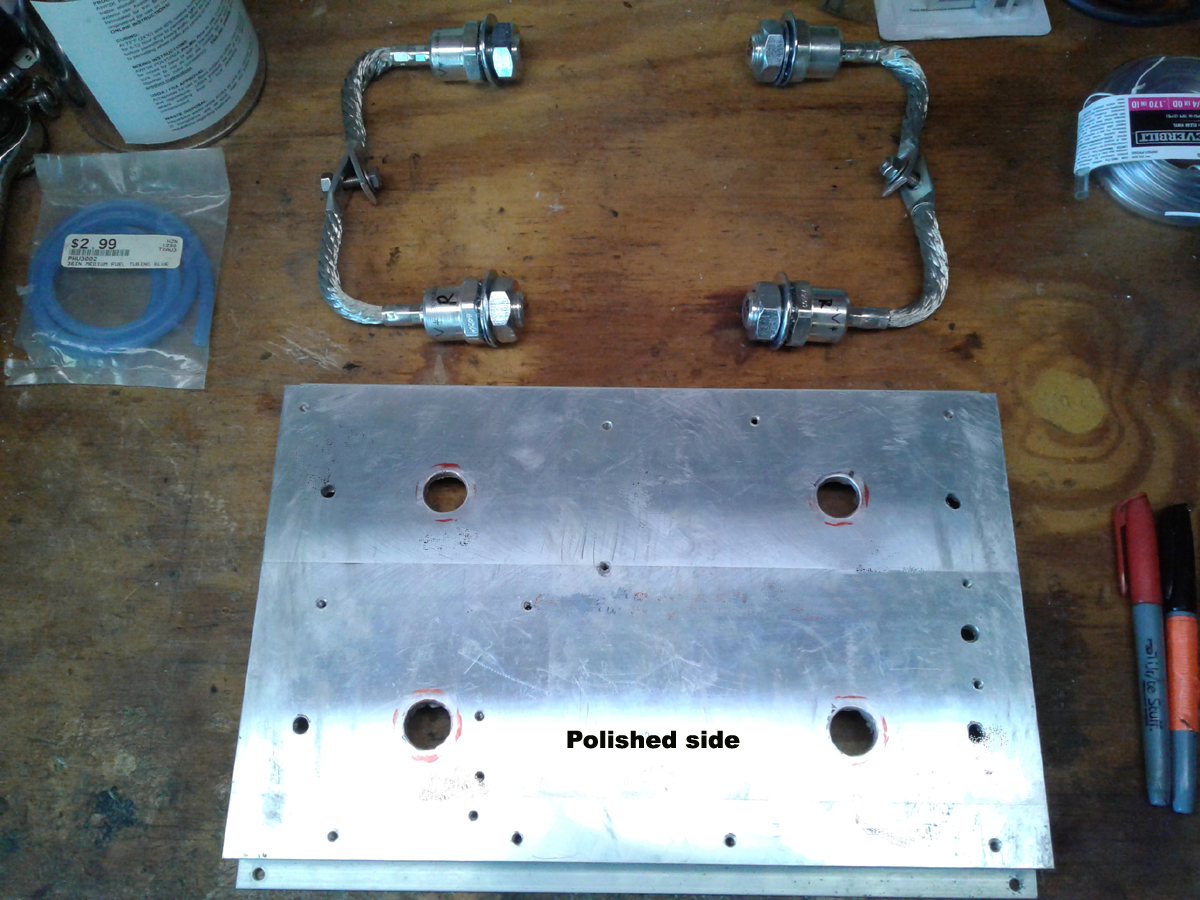xxxxxxxxxxx
xxxxxx
Hacked Tombstone Lives On To See Another Century
xxxxxxxxxxx
xxxxxx
Disclaimer: This is NOT an instructional or tutorial for the general public. This is merely a portrayal of what has been accomplished. If you proceed and injure or kill yourself YOU alone are fully liable and responsible for your own actions.
I have over 39 years experience with 230 volt electrical work on pumping systems. Unless you are trained at and have many years of experience with high voltage and high amperage AC electricity I don't recommend you actually attempting any of this.
xxxxxx
600 volt / 300 amp Bridge Rectifier Home Brew Project
“DANGER 230+ VOLTS - NO USER SERVICEABLE PARTS INSIDE !” Heh.
xxxxxx
xxxxxx
xxxxxx
I had bought a 1966 Idealarc 250 about 35+ years ago for ~$250,
the previous owner told me it had survived a saltwater flood
down near the bay, it's a BEAST, ole timers refer to them as "Tombstones",
some serious weight of real copper windings, I replaced the internal fan
some 20 years ago, but when I turned it on most recently it ran louder
than normal for about 5 seconds then popped the circuit breaker on the wall.

sssssssss

Views inside welder

Lincoln used bare copper strips for electrical connections
xxxxxx
I got on the internet and found the typical problem,
the DC SCR rectifier bank just had a failure,
I unplugged the welder, opened it up, before
poking around too much I put on rubber gloves
and used a screwdriver to short across the
terminals of any capacitors inside to bleed
off any high voltage to eliminate any "Hail Mary surprises".
Upon testing with my analog multimeter I discovered sure
enough - - - at least one, and up to one whole bank of the
four banks of the total 24 SCR's dead shorted or "latched" fully closed.



Switch the leads and you get conductivity - - both ways - - at least one diode is shorted.
A properly functioning diode will give you DC conductivity in one direction, but not in the other
Note: I am testing across both sides of the diode(s) at the aluminum plates, which is a bit different than the testing method that Lincoln is providing.

(Old document from Lincoln above is skewed a bit)
Called Lincoln tech support, they had to get me
over to the one "ole timer" they had on tech support
who could still advise me, he agreed on the symptoms
being the DC rectifier, but he said sorry, don't have a part anymore.
Reluctant to give up on this relic,
I started looking around the 'net for power diodes,
ended up ordering four Vishay stud mount power
diodes with 600 volt, 300 amp specs
(way overkill, require a 22mm socket) from Galco
out of Michigan, 2 regular and 2 reverse,
to “roll my own” bridge rectifier,
cost about $135.00 for all 4 of those monsters
(really were not any serious power diodes
on a google search much less expensive).
The standard diode is cathode to stud.
The “R” designation is the reverse, anode to stud.

Just one of these diodes capacity could handle rectification
of AC to DC of much more than my whole house main
panel max current, if there was a need, but a decent heat sink and 4 diodes
with a bit of thermal compound are needed to properly
complete a bridge rectifier.
So I repurposed a serious aluminum heat sink about
13” x 9” out of a salvaged Goulds VFD Aquavar
pump controller "computer", butchered out 4
portions of the fins on the heat sink very slowly
with a forstner bit on a drill press to create four
circular 1.5" bolt mounts, finally cut the heat sink
in half and mounted it with an insulator strip
(each half heat sink electrically isolated from
the other with fiberglass sheet).


Not the greatest job on the recessed holes for mounting the diodes,
but sure beats having my pockets emptied for at least $100 for professional machining.
The smaller holes were originally intended for mounting the rectifier, but another scheme was envisioned.
xxxxxx
Picked up some thick 1" copper strap from
my local metal scrap dealer for elec. connections,
checked and replaced a smoothing capacitor.
Anti oxidation / anti corrosive electrical compound
applied on all new connections. Incidentally I
had to grind/cut the 4 or 5 intake louvers internally in the
welder housing down to only 3/4" protrusion
with an abrasive cut off blade for more space
internally to mount this beast of a rectifier,
installed 1/4" hole hardware cloth internally
over the entire rear air intake or exhaust to keep
out vermin.

Diodes installed with thermal compound, Ox-Gard applied to all electrical connections, diodes torqued to 25 Ft. lbs. spec
xxxxxx
The 2 heat sinks composing the bridge rectifier were mounted so
fins were oriented vertically for proper airflow.
xxxxxx
End Result ?
At up to 140 amps DC setting I could
plate metal continuously with this welder at 100% duty cycle
- - - or again, with the DC setting charge the
batteries in at least 28 or more cars all at the same time,
at 10 amps each (a different DC-DC converter probably
needed to get down to ~13 volts).
Trying doing that with a $400 Big Box store
crackerbox welder with all aluminum windings . . .
BTW, reverse DC is really great for 7018 rods,
they purr like a kitten when running DC.
Indeed, old Idealarc's weigh at least as much as
4 big sacks of concrete mix. I cannot find ole
Idealarc's on Craig's list anymore for less than $1000.
xxxxxx
xxxxxxbbbbbbbbb
Disclaimer: This is NOT an instructional or tutorial for the general public. This is merely a portrayal of what has been accomplished. If you proceed and injure or kill yourself YOU alone are fully liable and responsible for your own actions.
I have over 39 years experience with 230 volt electrical work on pumping systems. Unless you are trained at and have many years of experience with high voltage and high amperage AC electricity I don't recommend you actually attempting any of this.
.
D











